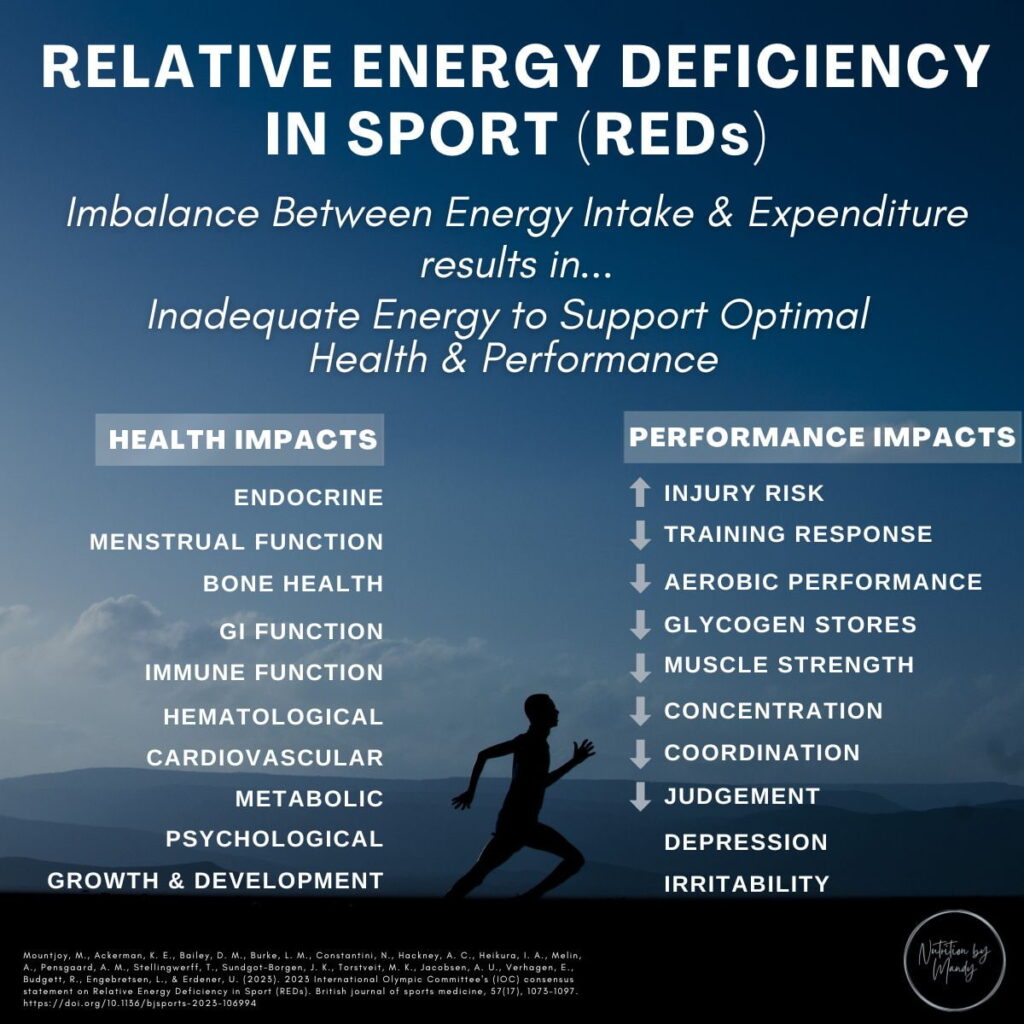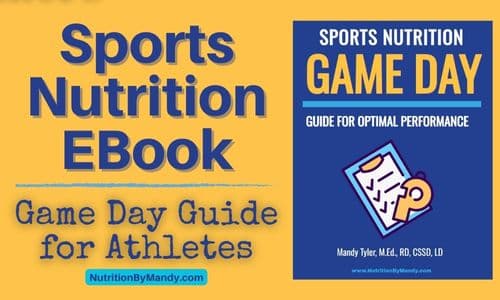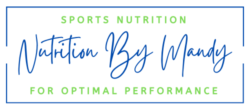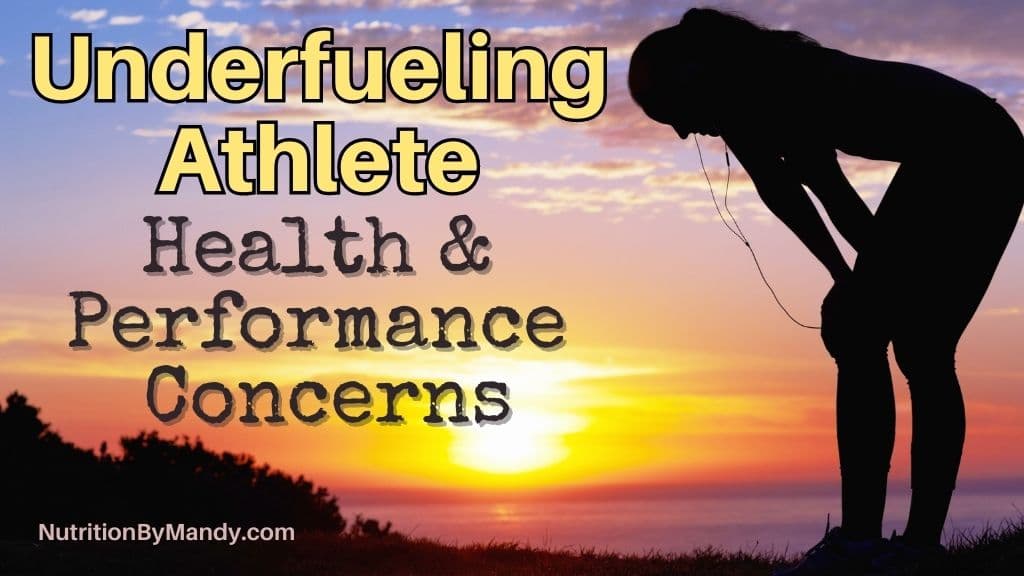Underfueling Athlete: Health and Performance Concerns
It is important for coaches, athletic trainers, and parents to be aware of the health and performance concerns that can result when an athlete is underfueling.
Let’s take a look at the impact underfueling can have on an athlete. Then we will explore some signs and symptoms of underfueling in athletes.
Underfueling in Athletes
It is common for athletes to expend a high number of calories through practices, competitions, strength training and conditioning, as well as normal daily activities.
When daily caloric expenditure exceeds dietary intake of calories from foods and beverages an imbalance occurs.
This imbalance of calories results in inadequate energy being available to support the athlete’s health and performance.
What is Relative Energy Deficiency in Sport (REDs)?
Low energy availability can lead to a syndrome of health concerns that have negative impacts throughout the body. In addition, the caloric imbalance can negatively impact sports performance (1, 2, 3).
Relative Energy Deficiency in Sport (REDs) is the term used to describe the syndrome of concerns resulting from low energy availability (3).

Does REDs Occur in Male Athletes?
It is important to recognize that a calorie imbalance and resulting energy deficiency can occur in both male and female athletes (2).
However, it appears that the magnitude of the energy imbalance necessary to cause the health and performance concerns associated with REDs is greater in male athletes. Research suggests that males athletes can sustain a lower energy balance before it becomes problematic than female athletes (3).
Regardless of this difference, it is important for coaches, athletic trainers, and parents to be aware that REDs can occur in male athletes and negatively impact their health and performance.
Health Concerns Related to REDs and Underfueling in Athletes
Let’s now explore the specific health and performance concerns that may occur as a result of underfueling and REDs.
Health concerns related to underfueling and REDs in athletes may include (1, 2, 3):
- Nutrient deficiencies
- Increased risk of illness, infection, and injury
- Alterations in hormone levels (endocrine function)
- Low bone mineral density leading to an increased risk of stress fractures
- Disruption of the menstrual cycle
- Impaired reproductive function
- Reduced metabolic rate
- Constipation and delayed gastric emptying
- Unfavorable blood lipid profiles and endothelial dysfunction
- Impaired growth and development
- Urinary incontinence
- Sleep disturbances
- Psychological stress and depression
Performance Concerns Related to REDs and Underfueling in Athletes
In addition to health concerns, underfueling can also impact an athlete’s performance.
Low energy availability may lead to decreased strength, endurance, and coordination, difficulty concentrating, decreased cognitive performance, and a reduced response to training (1, 2, 3).
Underfueled athletes may not be able to train at a high-level due to decreased energy (glycogen) stores, thus leading to further decreases in performance.
In addition, muscle protein synthesis and recovery from exercise sessions may be impaired in athletes with REDs (1, 2, 3).

Signs and Symptoms of REDs and Underfueling in Athletes
The following signs and symptoms may be observed in athletes that are underfueling (1, 2, 4):
- Chronic fatigue
- Frequent illnesses
- Overuse injuries and stress fractures
- In females, irregular period or cessation of the menstrual cycle
- Decreased heart rate and systolic blood pressure
- Feeling cold (decreased body temperature)
- Constipation
- Irritability, depression, mood swings
- Difficulty concentrating
- Athlete expressing feelings of burnout
Disordered Eating and REDs
It is important to note that in some situations, disordered eating behaviors may be contributing to the calorie imbalance in both male and female athletes.
Disordered eating exists on a continuum ranging from occasional unhealthy eating and exercise behaviors to clinically diagnosed eating disorders (1).
Regardless of where an athlete falls on this continuum, if an athlete is demonstrating disordered eating behaviors it is important to seek help for the athlete.
In addition, athletes who participate in weight sensitive sports, who are injured, or who have a teammate with disordered eating, should be carefully screened. These athletes may be at an increased risk for disordered eating (2).
Signs and Symptoms of Disordered Eating
Athletic trainers, coaches, and parents need to be aware of the signs and symptoms of disordered eating.
Early identification of disordered eating patterns and treatment is key for promoting better health outcomes for the athlete (5).
Warning signs of discorded eating may include (5, 6, 7):
- Excessive focus on food and dieting
- Elimination of specific foods or entire food groups from the diet
- Rigidly following specific food rules and rituals
- Secretive eating or exercise routines
- Feelings of guilt for eating “unhealthy” foods or excess calories
- Excessive exercise beyond what is required of the team or recommended by the coach
- Visiting the bathroom following meals
- Expressing body image dissatisfaction
- Avoidance of team events involving food

Treatment for RED-S and Underfueling in Athletes
Correcting the energy imbalance is key in the treatment for REDs. Treatment may include working with the athlete to increase caloric intake, reduce physical activity, or both.
A sports dietitian nutritionist can help educate the athlete on calorie needs and food choices to support physical activity. This can be particularly helpful when the athlete is not intentionally restricting their daily intake and is open to increasing calorie intake to support their health and performance (2).
If an athlete is displaying disordered eating behaviors or has an eating disorder, the athlete should get support from a team of professionals, including a physician, sports dietitian nutritionist, and a mental health professional.
This treatment team will work together to address the specific health and nutrition concerns of the athlete (2, 5).
Food Insecurity and Underfueling in Athletes
In addition to guidance on meeting caloric needs, it is important to ensure the athlete has adequate access to food. Food insecurity can be an underlying cause of underfueling in athletes.
Athletes may be hesitant to discuss food insecurity thus it may not be identified as a contributing factor. Thus, screening athletes for food insecurity and connecting them with community resources for support is important (8).

Underfueling Athlete: Importance of Prevention
Early recognition and treatment of energy deficiency is important for the athlete’s overall health and well-being. Educating athletes on how to properly fuel their bodies for sports performance is an important aspect of preventing RED-S.
In addition, there is a need to increase awareness of the signs and symptoms of underfueling as well as disordered eating behaviors.
Early identification can help ensure athletes who are struggling with a caloric imbalance get needed support.
Underfueling Athlete: Health and Performance Concerns
You now have an overview of the concerns that can arise when an athlete is not consuming adequate energy to support health and performance.
It is important to increase awareness of the signs and symptoms of REDs to help ensure athletes that are underfueling get the help needed.
For additional information on disordered eating, visit the National Eating Disorder Association’s website. You can also learn more about disordered eating concerns in athletes in my blog: Orthorexia vs. Anorexia in Athletes.
Join the Nutrition By Mandy Email List & Get a Free Athlete’s Grocery List
Click HERE to join the Nutrition By Mandy e-mail list. When you join you will receive a free athlete’s grocery list to print and take with you to the store.
About the Author
Mandy Tyler is a Sports Dietitian Nutritionist in the San Antonio, TX area. She is a Registered and Licensed Dietitian, a Board-Certified Specialist in Sports Dietetics, a Licensed Athletic Trainer, and is a Certified Exercise Physiologist through the American College of Sports Medicine. Mandy has experience working with athletes at the high school, collegiate, and professional levels. She believes the key to reaching one’s full potential, both in everyday life and in sports performance, relies on a healthy nutritional foundation.

If you are looking to take your performance to the next level, make sure to check out my new Sports Nutrition Game Day Guide. This downloadable guide is written to help athletes develop an individualized plan to achieve peak performance on game day.


Pingback: 7 Nutrient Deficiencies Causing Fatigue You May Not Suspect – IdealBodyGoal.com